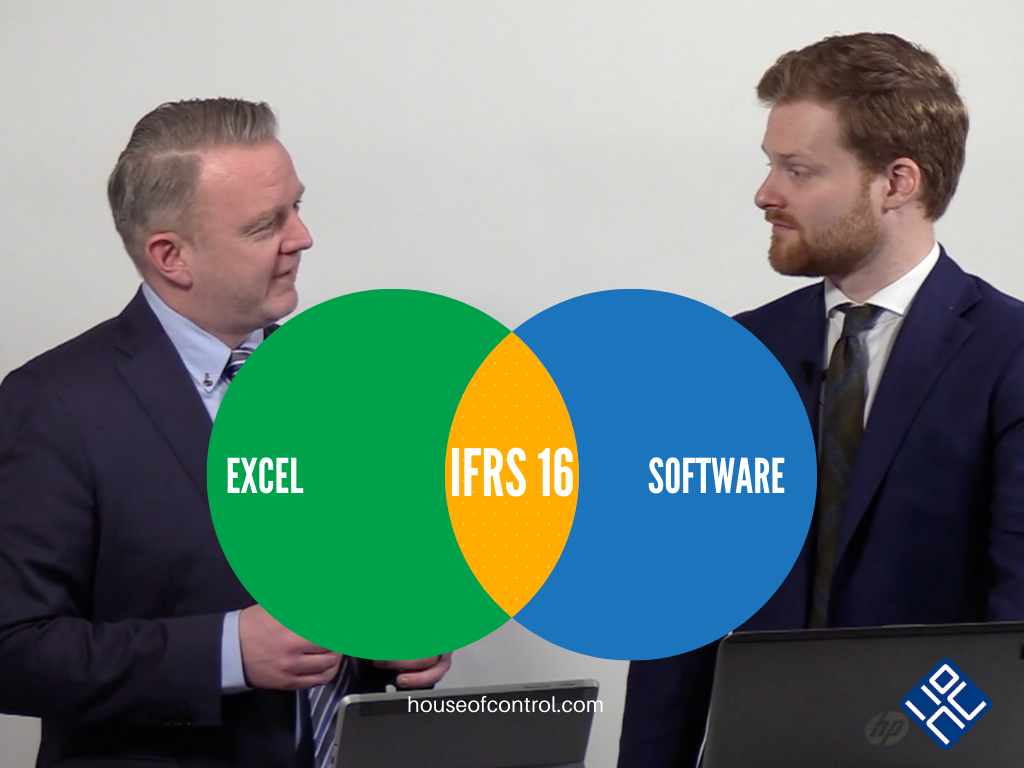IFRS 16 cheat sheet
%20(1).webp?width=2240&height=1260&name=1%20(23)%20(1).webp)
IFRS 16 has been in effect since January 2019 and continues to reshape lease accounting. The standard requires almost all leases to be reported on the balance sheet, impacting both financial ratios and reporting routines. For finance professionals, this means greater transparency – but also more complexity.
This guide is both a cheat sheet of IFRS 16 rules and a practical roadmap for handling the challenges in daily reporting.
Summary
IFRS 16 requires companies to recognize both lease liabilities and right-of-use assets on the balance sheet. This impacts EBITDA, leverage ratios, and audit processes.
Finance teams face three key challenges:
- Collecting and managing lease data across entities
- Handling modifications, CPI adjustments, and discount rates
- Avoiding spreadsheet errors and ensuring audit-ready documentation
Automation is the most effective way to reduce errors, save time, and gain financial control.
Check out our guide "IFRS 16 - What you need to know" for more insights.
Key IFRS 16 Provisions
Lease classification
Under IFRS 16, almost all leases must be reported on the balance sheet. The only exemptions are short-term leases under 12 months and low-value leases such as office equipment.
Right-of-Use (ROU) asset
The ROU asset represents the right to use the leased item during the contract term. It is initially measured at the present value of lease payments plus any direct costs.
Lease liability
Lease liabilities reflect the obligation to make lease payments, discounted at the lessee’s incremental borrowing rate. For example, a five-year office lease is recognized as a liability from day one.
Depreciation & interest
Instead of a single “rent expense,” IFRS 16 requires both depreciation of the ROU asset and interest expense on the liability.
Real-world impact on financial statements
Companies adopting IFRS 16 see significant changes: assets and liabilities rise, EBITDA increases, but leverage ratios often look weaker. For CFOs, this shift requires clear communication with management, investors, and auditors.
Compliance challenges in daily work
Finance professionals report that IFRS 16 compliance is often more time-consuming than expected. The main reasons are:
- Manual data entry across subsidiaries, often leading to errors
- Difficulty managing contract changes and index adjustments
- Inconsistent documentation ahead of audits
These challenges create stress during closing periods and increase the risk of non-compliance.
Why automation is the key to IFRS 16 success
Spreadsheets are no longer sufficient to handle the complexity of IFRS 16. A dedicated system helps finance teams:
- Automate calculations for liabilities and ROU assets
- Apply CPI/index adjustments automatically
- Keep contracts and documentation in a searchable, auditable database
- Generate reports directly for management and auditors
With the right tools, IFRS 16 becomes less of a compliance burden and more of a source of financial insight.
Read more about converting from spreadsheets to software in this comprehensive guide.
Industry-specific considerations
-
Retail: Multiple store leases, frequent renewals
-
Transport & Logistics: Vehicle fleets with varying contract terms
-
Manufacturing: Mix of property and equipment leases
Energy & Utilities: Long-term land use and infrastructure commitments
Conclusion – Turning compliance into control
IFRS 16 has raised the bar for lease accounting, but it doesn’t have to be overwhelming. With the right processes and technology, controllers and CFOs can ensure compliance, reduce audit stress, and gain better visibility into lease obligations.
Ready to simplify your IFRS 16 reporting? Discover how automation can give you control and confidence.




